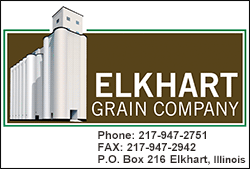|
Worm Composting is a DIY Project for All Ages
 Send a link to a friend
Send a link to a friend
[May 15, 2020]
DIY projects are a great way to welcome
Spring. Have you ever considered Worm Composting or Vermicomposting?
One pound of worms- about 500 worms- can eat between one-half and
one pound of food waste per day and can double in population in a
month if they have sufficient food, water, and shelter. |
|
 Vermipost is mostly worm waste referred to
as “castings” and compared to ordinary soil contains 5 to 11 times
more plant-available nitrogen, phosphorus, and potassium. It is a
mild organic fertilizer that is safe for your plants. Vermipost is mostly worm waste referred to
as “castings” and compared to ordinary soil contains 5 to 11 times
more plant-available nitrogen, phosphorus, and potassium. It is a
mild organic fertilizer that is safe for your plants.
“Worm composting is a great way for you to recycle fruit and
vegetable waste from your kitchen,” said Doug Gucker, University of
Illinois Extension Local Foods and Small Farms Educator,. “Another
great thing about this type of composting is that it can be done
year-round.”
The best worms for vermicomposting are: red worms, brandling worms,
and European nightcrawlers. These earthworms are surface dwellers
which means they will live in the upper layers of rich, organic
matter in piles of decaying litter. They do not burrow like some
common earthworms found in backyards. Vermicomposting worms can also
survive in temperatures ranging from 40-degrees to 90-degrees F but
prefer between 55 and 77F.

Small pieces of
fruits and vegetables- including peels-, ground eggshells, coffee
grounds, tea bags, and small amounts of moistened plain cereal,
bread and pasta are ideal foods for worms. Foods to avoid include
meat, poultry, dairy products, oils and strongly flavored foods such
as garlic and onions. In the beginning, feeding will be by trial and
error. [to top of second
column] |

The key is to understand the amount of food that the worms can
consume in a week, and not overfeed them. Scraps that are placed in the bin
should be buried in the worm bedding. This will help to reduce odor and keep
from attracting insects. Varying the location of the food will also help avoid
pockets of excess waste. Even though worms eat approximately half their body
weight in food each day, it is easy to overwhelm them and cause problems for
you.
To learn how to build an indoor vermicomposter visit the blog Know How, Know
More at
https://extension. illinois.edu/blogs/know-how-know-more
The Local Food Systems and Small Farms program is a branch of University of
Illinois Extension that provides research-based information about agriculture
health and safety, environmentally and economically sound pest control and
improving profitability and sustainability.
[Anita Wilkinson
Communications Program Coordinator
UNIVERSITY OF ILLINOIS EXTENSION
Fulton-Mason-Peoria-Tazewell Unit]
 |